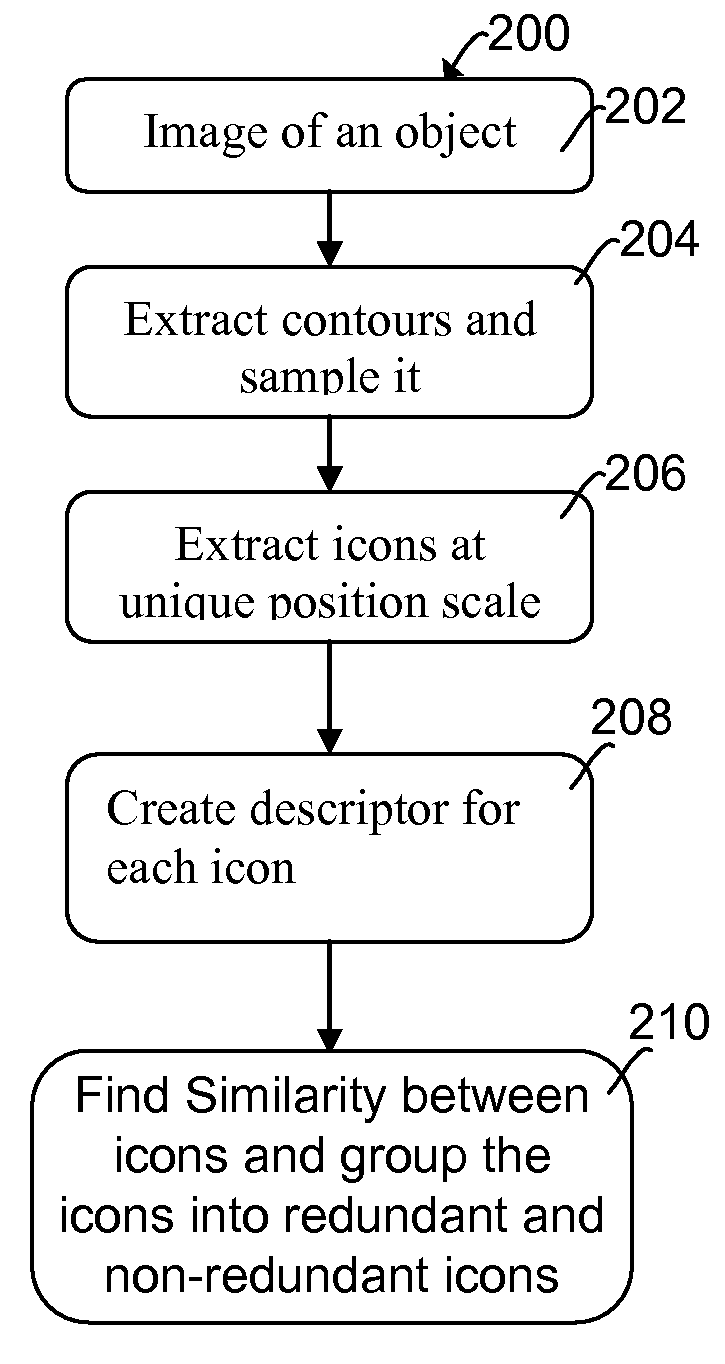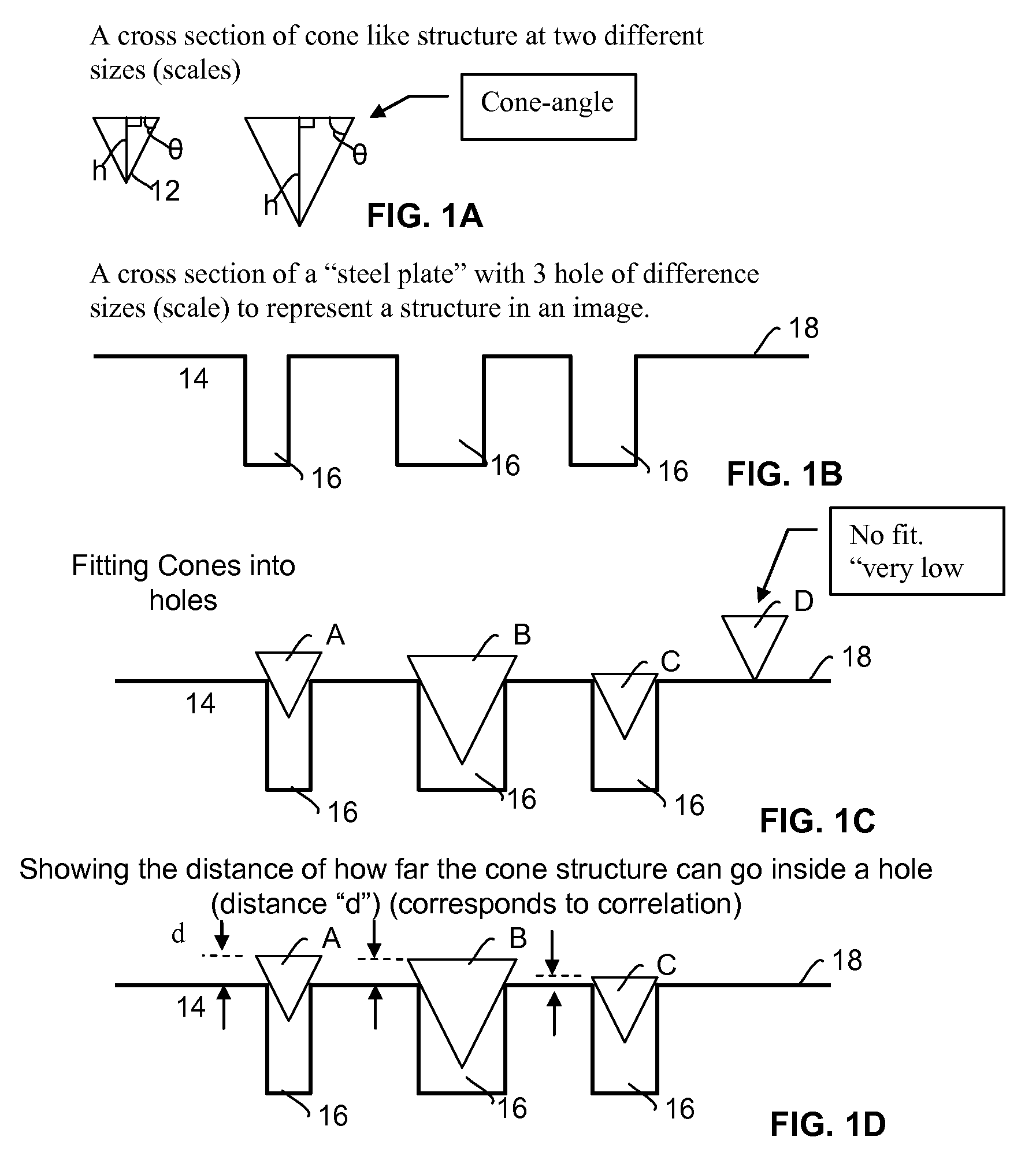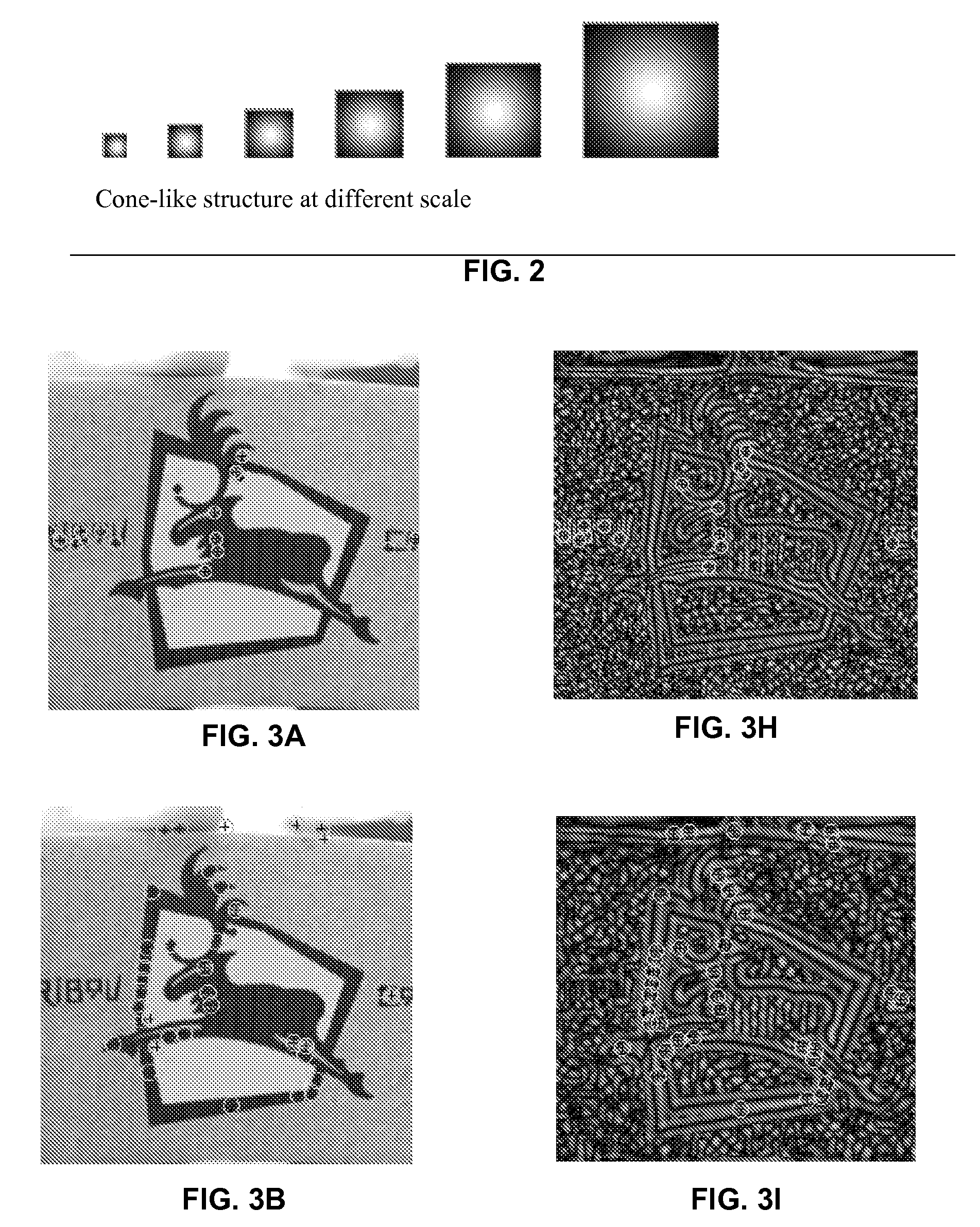System and method for visual recognition
- Summary
- Abstract
- Description
- Claims
- Application Information
AI Technical Summary
Benefits of technology
Problems solved by technology
Method used
Image
Examples
Embodiment Construction
[0031]The present invention is directed to a system and method for pattern identification of a learned image (or learned pattern) in a target image. Unique and stable points (e.g., x and y coordinate points) are extracted from an image of an object, regardless of object presentation. The uniqueness of the extracted points comes from the fact that these points have the same relative position in the object regardless of distance, orientation (e.g., tip, tilt, rotation, etc.) and illumination of the object from the viewer or viewing device. In other words, the extracted points are invariant to object presentation.
[0032]Early computer vision algorithms generally used an image subtraction method (also referred to as golden template matching) as a primitive method of recognition. Image subtraction is a form of distance measure between two images. For the image subtraction method to work, the object in the learned image has to be nearly identical to the object in the target (scene) image. ...
PUM
 Login to View More
Login to View More Abstract
Description
Claims
Application Information
 Login to View More
Login to View More - R&D
- Intellectual Property
- Life Sciences
- Materials
- Tech Scout
- Unparalleled Data Quality
- Higher Quality Content
- 60% Fewer Hallucinations
Browse by: Latest US Patents, China's latest patents, Technical Efficacy Thesaurus, Application Domain, Technology Topic, Popular Technical Reports.
© 2025 PatSnap. All rights reserved.Legal|Privacy policy|Modern Slavery Act Transparency Statement|Sitemap|About US| Contact US: help@patsnap.com



